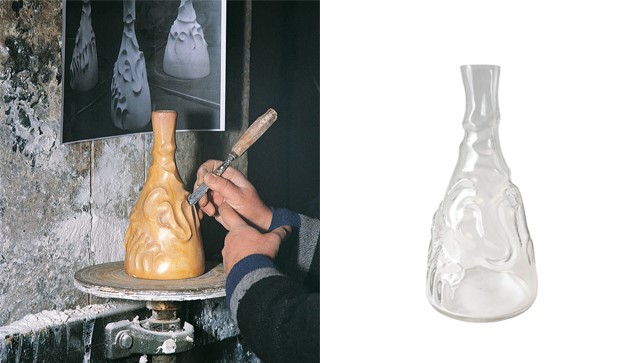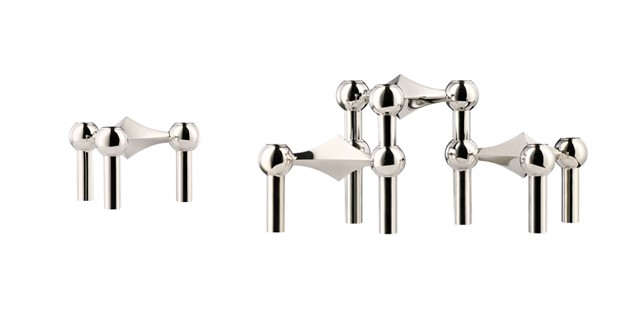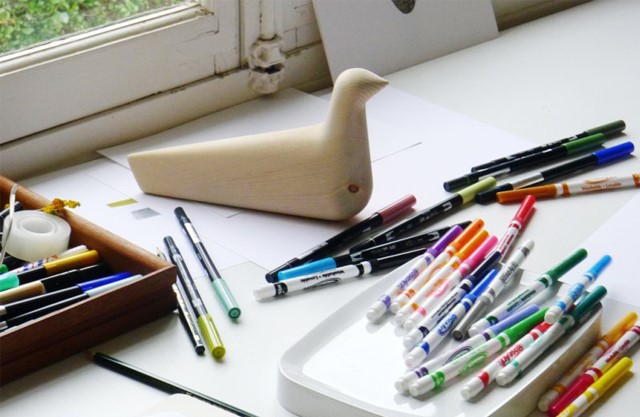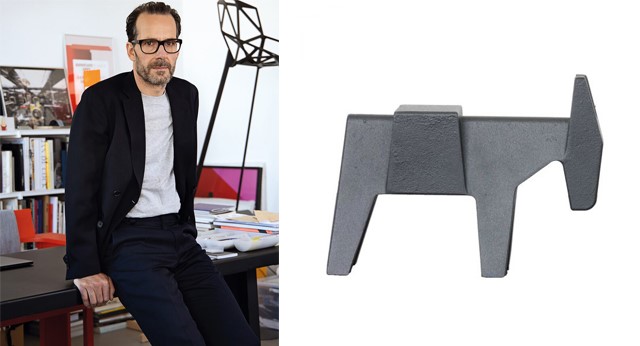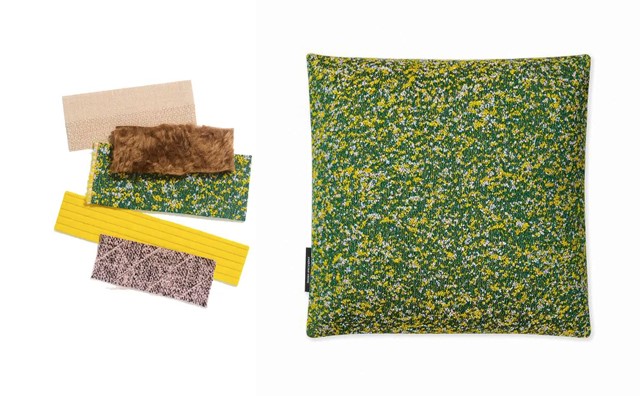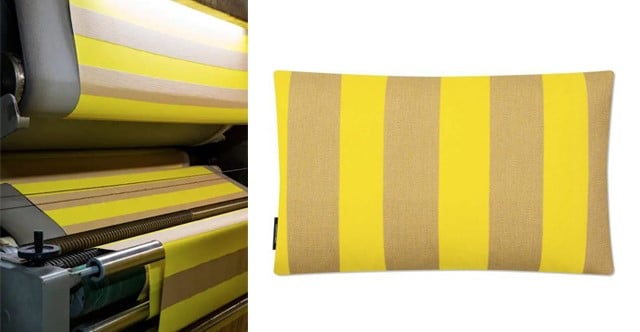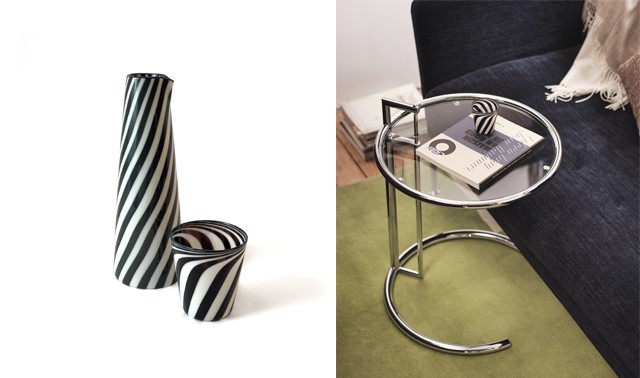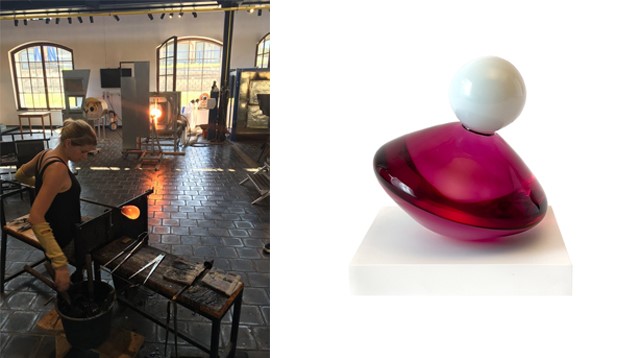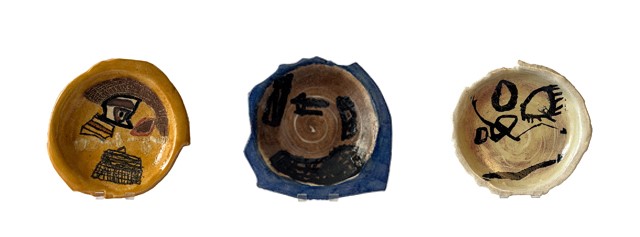A Timeline of Iconic Accessories
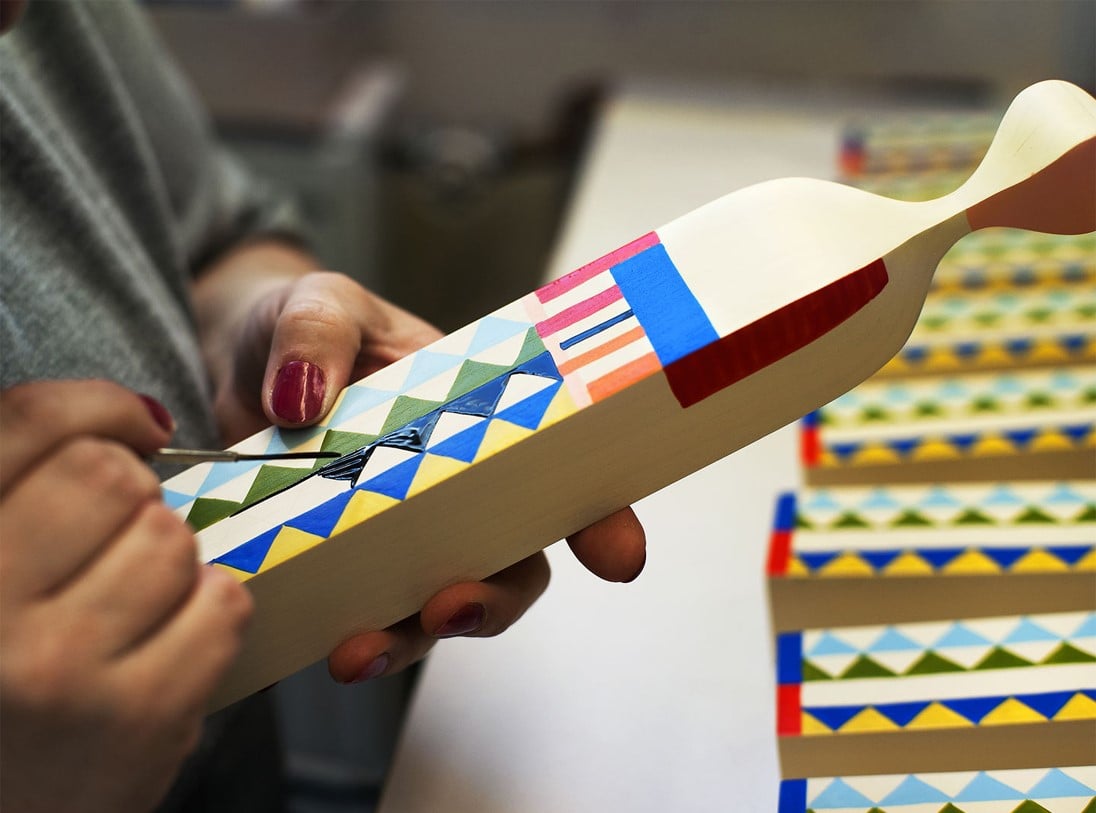
The Classic, the Contemporary, the Artisanal and their Designers
As Aram Store’s Retail Director, Ruth Aram’s expertise was to curate our range of decorative accessories so that clients could have, under one roof, the perfect vase for their new dining table or an unusual gift for that upcoming celebration. Today, we continue Ruth’s legacy of mixing charming favourites with vibrant new talents in our rejuvenated accessories range.
Our range embodies three key themes: the classic, such as the hand painted Alexander Girard Wooden Dolls by the twentieth-century architect, textile designer and avid folk art collector; the contemporary stalwarts, such as the Kvadrat/Raf Simons Atom cushion inspired by pointillist landscapes in expressionist paintings; and the artisanal, such as the glazed earthenware plates by portrait artist Clifton Wright. Whether produced by a world-renowned manufacturer or a highly-skilled independent designer, the pieces we select have in common a fascinating backstory – here we explore some of our favourites.
The Classic
Josep Maria Jujol – Casa de Familia Decanter (1912), BD Barcelona
Josep Maria Jujol (1879-1949) was a Spanish architect and close collaborator of Antoni Gaudí. After graduating from high school, Jujol moved to Barcelona where he later studied at the School of Architecture under Domenech i Montaner. In 1904, even before graduating, he began collaborating with Gaudí — a professional relationship that traversed the construction of buildings such as La Pedrera and Parc Guell until the master architect’s death in 1927.
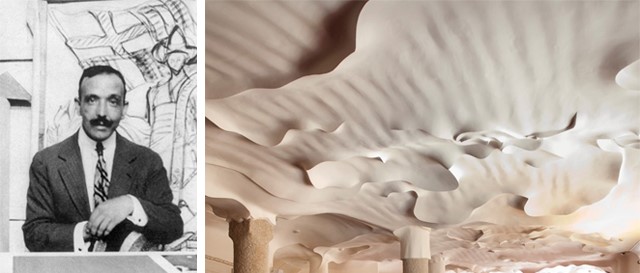
As one of the greatest, yet least known, of the Catalan architects, Jujol’s creativity transcended artistic disciplines. In addition to his work as an architect, he was also an artist and clay sculptor — an activity that he taught at the School of Labour in Barcelona.
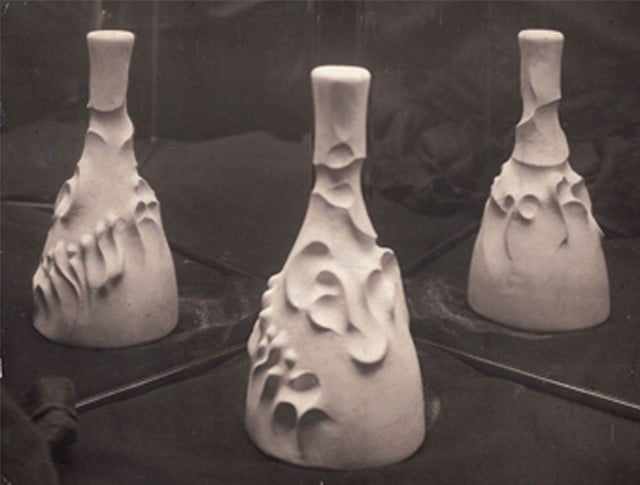
Designed for an orphanage of the same name in 1912, the original Casa de Familia decanter was a humble object that magnificently demonstrated Jujol’s sculpting ability – reminiscent of the ceiling details at La Pedrera. Today, it has been faithfully reproduced by BD Barcelona from the only image still in existence (above) of the original model, which was taken in front of two mirrors to show the sculptural work in full.
Alexander Girard – Girard Wooden Dolls (1952), Vitra
Alexander Girard (1907-1993) was a trained architect, who also worked in interior, furniture, graphic and, above all, textile design. Favouring abstract, colourful and geometric patterns, he designed an extensive catalogue of textiles for the Herman Miller Company, which were later acquired and continue to be manufactured by Vitra today.
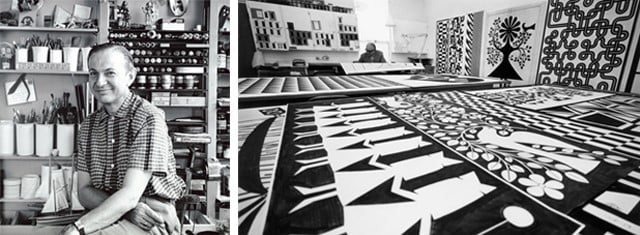
Hailing from a family of antique dealers, in addition to his work as a designer, Girard was also one of the world's most avid folk art collectors. Acquiring pieces from the American Southwest, Mexico, Central and South America, India, and Eastern Europe, Girard’s folk art collection peaked at 106,000 pieces before it was donated to the Sante Fe Museum of International Folk Art in 1978.
Designed in 1952, the original Girard Wooden Dolls were a collection of figures – from human and animal, to a little devilish character – that took inspiration from the objects and textiles collected on Girard’s extensive travels and initially intended solely as decorative objects for his magnificent Santa Fe home (which Rolf Fehlbaum, the son of Vitra’s founding family, first visited in 1960 and described as ‘the most fascinating house [he had ever seen] in the United States’).
These originals, which are part of the Girard estate, were later donated to the Vitra Design Museum and exhibited as part of 'Alexander Girard: A Designer’s Universe' in 2016. Today, the large collection of Girard Wooden Dolls are precisely replicated by Vitra in solid silver fir from Western Europe and individually hand painted — true ones-of-a-kind.
Werner Stoff and Hans Nagel – Stoff Nagel Candle Holder (late 1960s), Stoff Copenhagen
Werner Stoff (1939-2021) was a German architect and working artist who designed, in addition to architectural works, a signature of rounded sculptures which Stoff described as being 'without corners’.
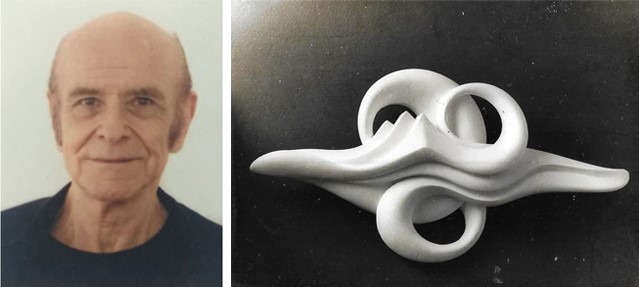
In parallel with Stoff’s early life, the aftermath of World War II and the repeated bombings that had been levelled against the city of Cologne, the Nagel brothers were sent out into the night to collect American cartridge cases. The brass cartridges were so plentiful that their father, a blacksmith, was able to transform these remnants of the war into ashtrays, vases and candle holders.
While each of the four sons went on to apply to the Cologne Art School – one becoming a painter and sculptor, another a silversmith – it was Hans Nagel (1926-1978) who, determined to pursue his father’s work, went on to serve as CEO of the small family-owned metalworking business.
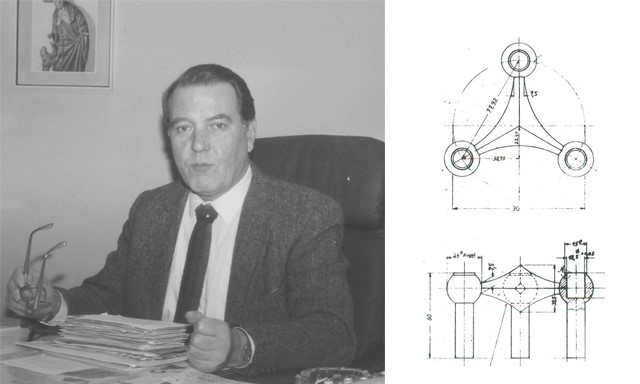
First struck by the idea during a skiing vacation in The Alps, where an accidental fall forced him to break the snow with three finger-holes, it wasn’t until years later that Nagel met Stoff in the design community of Cologne and told him of the imaginings of a beautiful but simple candleholder with room for three slim candlesticks — a modular design that could be combined and stacked into beautiful and unique shapes, dressed with tapered candles or used as a sculpture in its own right.
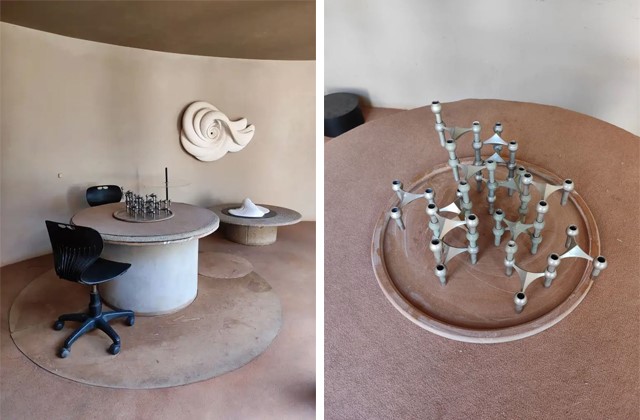
Commissioned to Stoff and produced by Nagel from the late-1960s, the first of the original candle holders were made from remaining brass cartridge cases until production faded into oblivion. Today, after an extended period of only being able to source originals from the Sixties, the Stoff Nagel candleholder is being produced by Stoff Copenhagen using Nagel’s original drawings in a range of metals with polished chrome and matte black finishes.
The Contemporary
Ronan & Erwan Bouroullec – L’Oiseau (2011), Vitra
Ronan and Erwan Bouroullec (born 1971 and 1976) are brothers and French designers. After studying at École supérieure des Arts Décoratifs in Paris and École nationale supérieure des Arts de Paris in Cergy, they began to work together and have continued to do so for many years. The Bouroullec’s collaborative projects range from the design of small objects to large spatial arrangements and architecture. Their production methods start at craftsmanship and run up to an industrial scale. And, their output is not solely three-dimensional; the brothers have focused their creative skills on drawings, videos and photography with equal success. They have worked with the likes of Artek, Cappellini, Flos, Glas Italia, Vitra and many more. Their designs are also part of the permanent collections of select international museums, such as Centre Pompidou and the Musée des Arts Décoratifs in Paris, the Museum of Modern Art in New York, and the Design Museum in London.
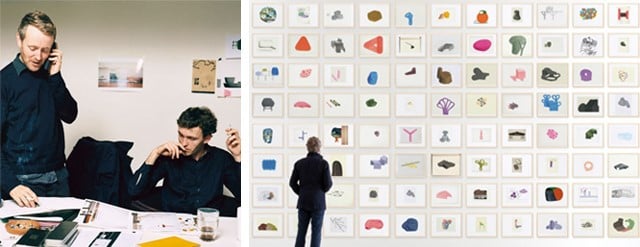
Designed in 2011, L'Oiseau is a sleek avian figure inspired by unpretentious artefacts of Nordic folk art. Available in a milled maple, ceramic or glazed finish, the Bouroullec brothers write: 'It is a simple bird without any other function than trying to propose a caring presence, a pleasant company. We have always been fascinated by animal representations whether they are primitive or more contemporary – from ivory bears made by the Inuit community to the Finnish birds made in blown glass. It could seem outdated to be interested in such subjects, however we truly think that it is a necessary fantasy to continue supplementing this symbolic bestiary’.
Konstantin Grcic – Ettore (2016), Magis
Originally trained as a cabinet maker, Konstantin Grcic (born 1965) is a German industrial designer. Ranging from industrial design projects, exhibition design and collaborations in architecture and fashion, since studying Design at the Royal College of Art in London he has gone on to work with the likes of Artek, Cassina, ClassiCon, Flos, Issey Miyake, Louis Vuitton, Prada and Vitra.
Designed for Magis in 2016, Ettore the Mule is a cast-iron ornament or doorstop finished in anthracite polyester powder. Grcic writes: 'It says a lot about Perazza, founder and head of Magis, that he has chosen the mule as emblem of his company. And, obviously, it says a lot about the company, its spirit and character being hard working, tireless. While we were working on the BRUT collection of cast-iron furniture, Perazza asked me if I could draw a mule to be cast in iron for the company´s 40th anniversary. At first I was surprised, thinking that I have probably not drawn an animal since my childhood. I did it, and it was fun. Ettore turned out a real mule, its legs firmly on the ground, determined and strong. But it is also a beautiful thing, loveable and playful. Just like Magis'.
Raf Simons – Atom and Reflex Cushions (2017), Kvadrat
Having originally studied industrial design in Gent and worked as a furniture designer for galleries and private interiors, today Raf Simons (born 1968) is a prominent Belgian fashion designer. In 1995, he launched Raf Simons Menswear in a drastic change of career and has since gone on to hold positions at Jil Sander, Dior Women and Calvin Klein, before his current role as co-creative director of Prada in partnership with Miuccia Prada.
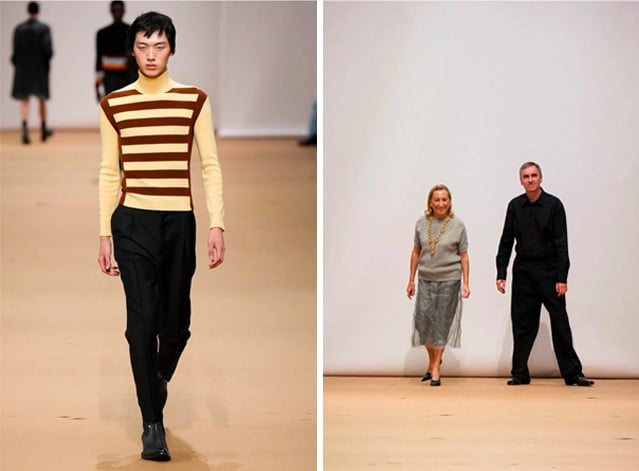
Like many of the aforementioned designers, Simons is also a passionate collector – in this case of contemporary art and modern design. Simons’ aesthetic and regular interdisciplinary collaborations are therefore often informed by this admiration.
In 2014, Simons began his first collaboration with Kvadrat, which explored the limits of upholstery fabrics by combining his visual aesthetic with Kvadrat’s unparalleled technical know-how to transform natural materials – such as wool, linen and viscose – into textiles that capture the shine of fur or the sumptuous matte appearance of a heavy woollen knit in the blended colours and materials for which Simons is known in the fashion world.
Simons writes: 'I was fascinated by how the colouration and weaving process in fashion textiles don't have the same limitations as those of furnishing textiles. Working with Kvadrat, we've been translating the subtle colouration and texture that you’d find perhaps in a tweed or boucle into textiles suitable for use in furniture. Because of the dense weave that is needed for furniture, the colouration becomes even more interesting, with almost painterly impact'.
Launched in 2017, the Atom cushion is upholstered in an experimental worsted weave-blend bouclé fabric inspired by fragments of pointillist landscapes in expressionist paintings. Speckles of colour, from duck egg blue to burgundy on black or bright yellow and grey on forest green, are scattered across the fabric, while more subdued designs – such as the Phlox, Ria and Sonar 3 cushions – present a more classic appeal.
Also part of the Kvadrat / Raf Simons collection, the Reflex cushion is upholstered in a playful flat-woven fabric with ten centimetre wide stripes of embroidery in a slightly irregular yarn. From buttercup yellow and stippled camel to dark orange and fire engine red, the soft woollen yarn leaves patches of the base colour visible through the weave, resulting in a sense of depth that suggests a complexity to the boldly graphic style, inspired by the festive maritime striped upholstery of Franco Albini’s Seggiovia chair and the long heritage of stripes in high fashion.
The Artisanal
Laurence Brabant – Helix Tumbler and Carafe (2014)
Laurence Brabant (born 1971) is a French designer. After graduating from École Duperré in Paris, Brabant discovered a passion for glass. Combining poetry with contemporary research, today she works in close collaboration with her husband and master glassblower Alain Villechange as Laurence Brabant Editions. Internationally recognised, they have worked with brands such as Baccarat, Diptyque, Cristallerie Saint Louis, Silviati, Christian Tortu, Louis Vuitton, Starck for JP Gaultier, and more.
First produced in 2014, the Helix tumbler and carafe are handmade in France using the free hand blowing technique. As a result, each piece is completely unique so slight nuances can be expected and enjoyed. Inspired by the evocation of childhood candy, the playful mixed hues are juxtaposed with a delicate and refined scale. The spiral décor in white and dark grey, is made using the roll-up technique on borosilicate glass canes.
Brabant and Villechange play with technique and transparency, informed by how they imagine the glass will be used and what it will look like when it is full. In the Helix tumbler and carafe, transparency, translucence and opacity are thus used to create simple and graphic motifs that play with rhythm and colour combinations for a strong visual impression.
Laura McKinley – Rose and Tangerine Spinners (2018)
Laura McKinley (born 1986) is an English glassmaker. Having studied Glass at Buckinghamshire Chilterns University, she has gone on to graduate with an MA in Ceramics and Glass from the Royal College of Art in London, working at London Glassblowing and co-founding a glass studio in Camberwell with three fellow graduates shortly thereafter.
First produced in 2018, the Tangerine and Rose Spinners are inspired by play and the childlike ability to imagine small objects – when held in the hand of a child – as cars, skyscrapers or even planets. McKinley’s fascination with free blown and hot sculpted glass – in particular the Italian technique of Incalmo, the joining together of two separately blown glass bubbles whilst still hot – is inspired by the spontaneity of the hot material and the necessity of instant visual judgments that give rise to shifts in her ideas.
Clifton Wright – Facial Features, In the Clouds and Outline Face Plates (2021)
For well over a decade, Clifton Wright (born 1982) has pursued portraiture. His works have been exhibited at the Tate Modern, Victoria & Albert Museum and Whitechapel Gallery in London, the Musée des Arts Décoratifs in Brussels, and more.
Wright’s early portraits present expressive faces tessellated with abstract shapes in response to collage work, family albums, art books and exhibitions, characters from science fiction, astronomy and ancient iconography: ‘I cannibalize my own artworks. I draw the collage together with found images that I like, to make the figures active within a wide space. You can make a new face. The pictures become themselves, like a new person, the person and the background together. The green lips are echoed in a green shape in the background, the yellow in the eyeballs is another shape in the background. The foreground and the background sometimes push up against each other, interlocking, like in a jigsaw puzzle’.
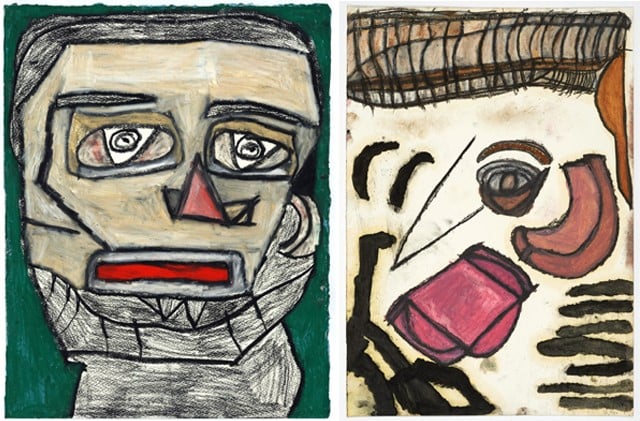
In more recent years, Wright prefers to work from life and draws the people around him. Whilst his models may be close friends that he has known for many years, he continues to avoid traditional portraits. Wright instead uses the face as a starting point to be considered, abstracted and reorganised. In ‘Notes on Faces’, Wright explores: ‘The face is the most important part of the body, if you get the face right the rest will pretty much follow. It is the shapes in the face and the colours in the face that tell me what the drawing is going to be. My work is more about that abstract stuff than who the person is – a face is the starting point, but the point is the picture. I use the structure of how things slot in to the face, and continue it, like a jigsaw puzzle, across the rest of the picture’.
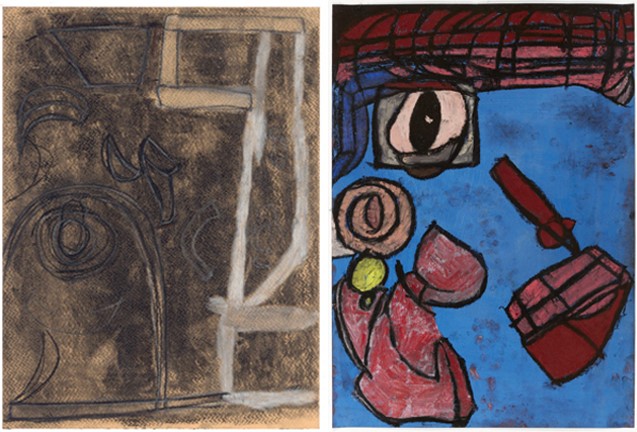
Produced in 2021, Wright’s first significant body of works in clay uses slab rolled clay, press moulding, and the playful use of hand applied, layered and poured glazes atop the drawn surface. Inspired by his own portraiture studies, the ‘Combusted Portrait’ series was shown for the first time at Collect International Fair for Craft and Design at Somerset House in 2022 where we fell in love with Wright’s Facial Features, In The Clouds and Outline Face glazed earthenware plates.
Wright has been a member of Intoart – a London based art collective of artists and designers with learning disabilities – since 2007. Intoart addresses inequalities of access to the visual arts, education and culture by people with learning disabilities. Established in 2000 and led by co-founders Ella Ritchie MBE and Sam Jones, the studio, now in its twenty-second year, is a site of collective action, participation and ambitious art, design and craft production.
Images: © Aram Designs Ltd; © Alexander Girard Estate; © BD Barcelona Design; © Ronan & Erwan Bouroullec Design; © Felix Speller; © Herman Miller, Inc.; ©Intoart Projects; © Kvadrat; © Fundacio Catalunya La Pedrera; © Laura McKinley; ©Magis Spa; © STOFF Copenhagen; © Vitra Design Museum; © Werner Stoff Estate and more.
